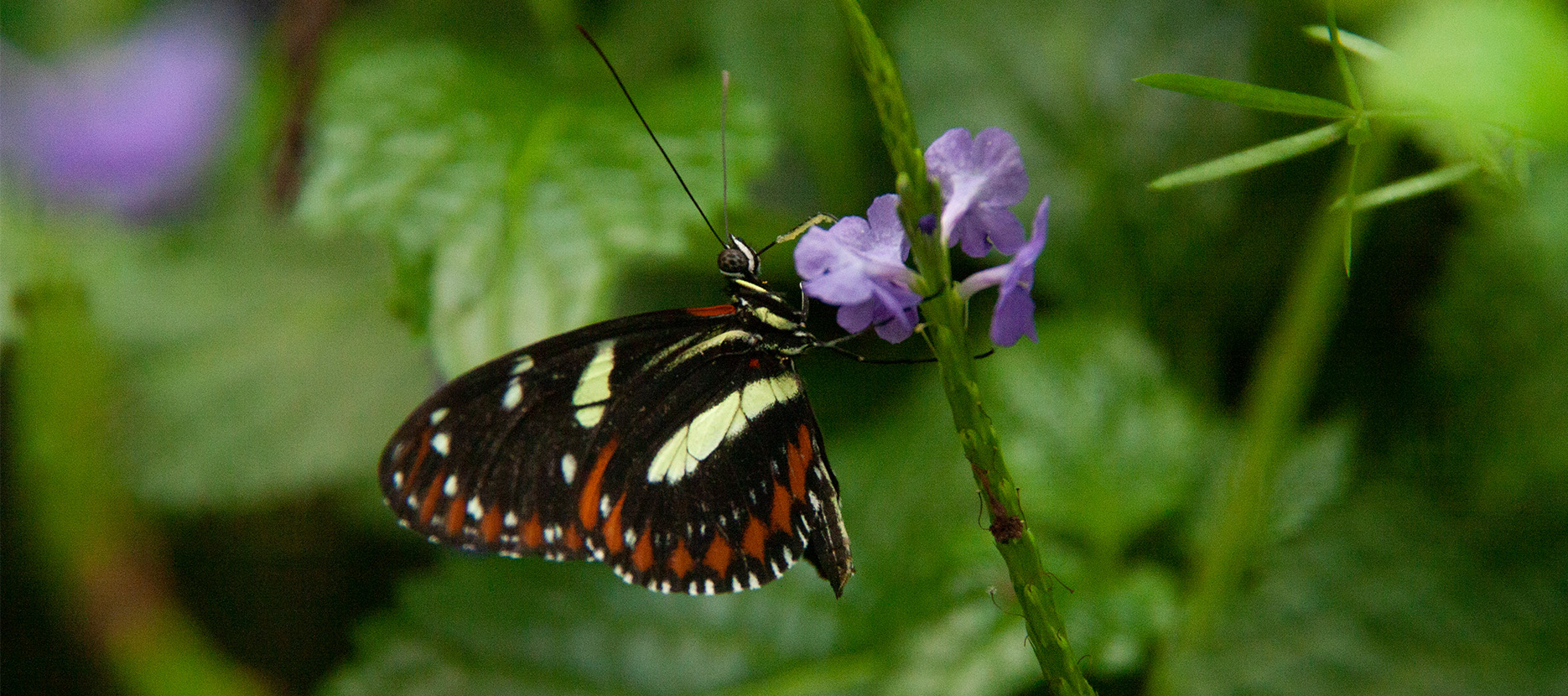
Tropical butterflies’ blaze of colours
The most magnificent specimens of tropical butterflies (Lepidoptera) can be found in Vlinderica of the fully covered Pantropica. This butterfly garden is home to more than two thousand splendidly coloured butterflies of twenty-five tropical species. These exotic fluttering insects are being bred in the tropical park’s caterpillar nursery or imported from Costa Rica and the Philippines.
Butterflies in our butterfly garden

Lepidoptera
Butterflies are also referred to as lepidoptera? They owe this name to the fact that their wings consist of millions of minuscule scales. These scales contain pigment and give the wings their most unusual colours and patterns.
Butterfly reproduction
A tropical butterfly’s life is short, even though we can endlessly enjoy its beauty in the largest butterfly garden of Europe. Most butterflies in the Butterfly Valley do not grow older than three weeks. Their brief existence is mainly focused on reproduction. The butterflies spread scents and sounds to attract a suitable partner of the same species. Male and female will amorously flutter around each other once they meet and then mate.


A butterfly’s life cycle
The life cycle of the butterfly restarts once mating is over. The female will lay her eggs on the host plant. The eggs will hatch into caterpillars a few days later. Eating consumes the life of this elongated creature. The caterpillar will shed 4 to 5 times as its skin does not grow along. During its last moult, the caterpillar spins a cocoon around its body. This cocoon – also referred to as chrysalis – transforms a caterpillar into a butterfly. This process often takes a few weeks. Once the butterfly emerges from the chrysalis, it will slowly unfold its wings and then fly off in the butterfly garden to look for it soulmate.

What do butterflies eat?
Not all tropical butterflies have a proboscis or mouth with which to consume liquid feed. The Atlas moth is an example thereof and consequently only lives for a few days. It is also the largest butterfly in the world. Fortunately, most butterflies do have a proboscis. This long tongue that can be unfurled allows butterflies to suck up nectar and fruit juices. These nutrients provide sugar, which in turn provides energy to these joyous flutterers.
































